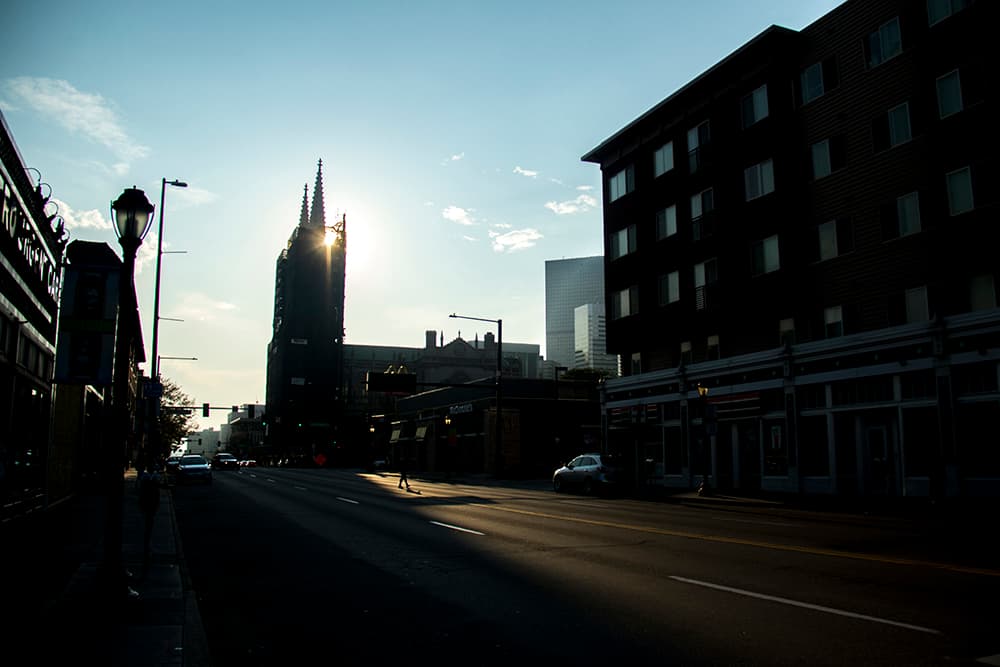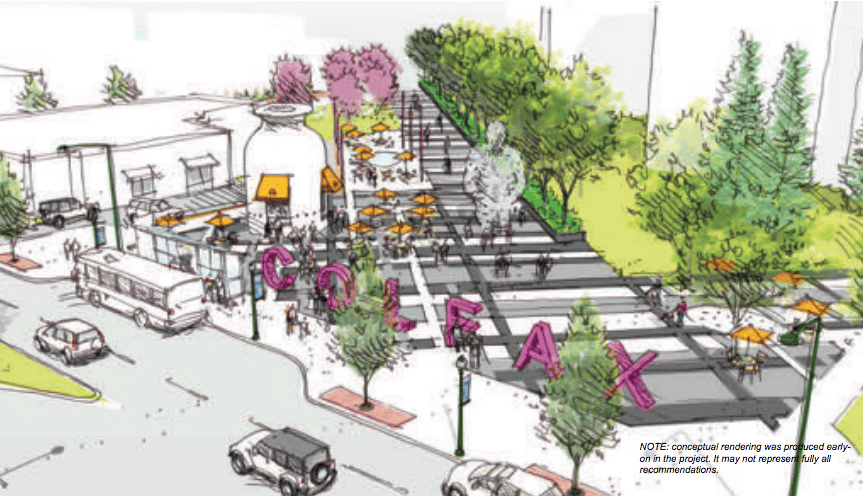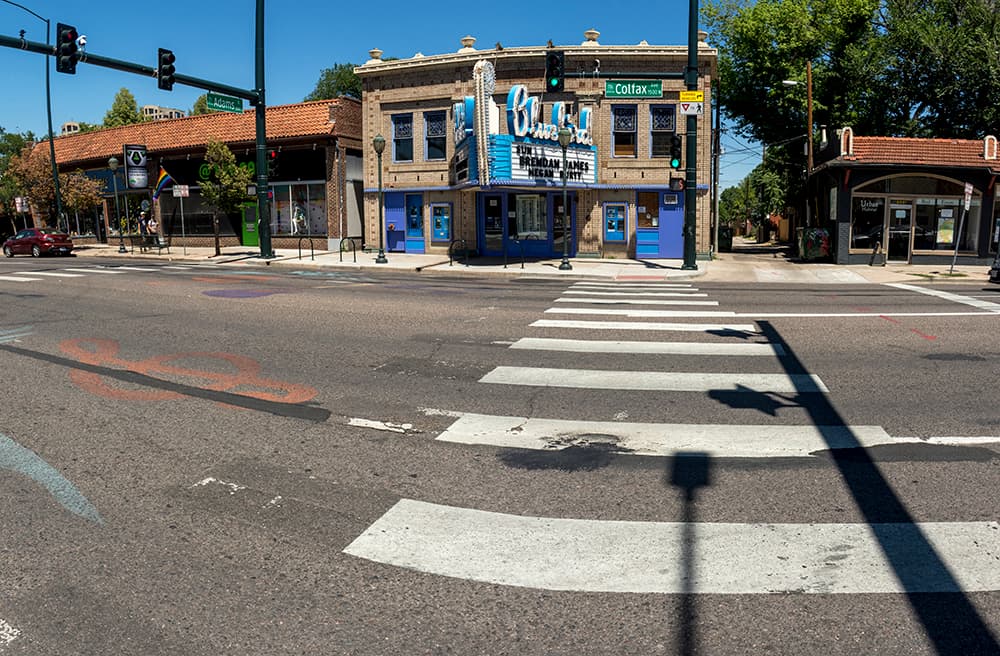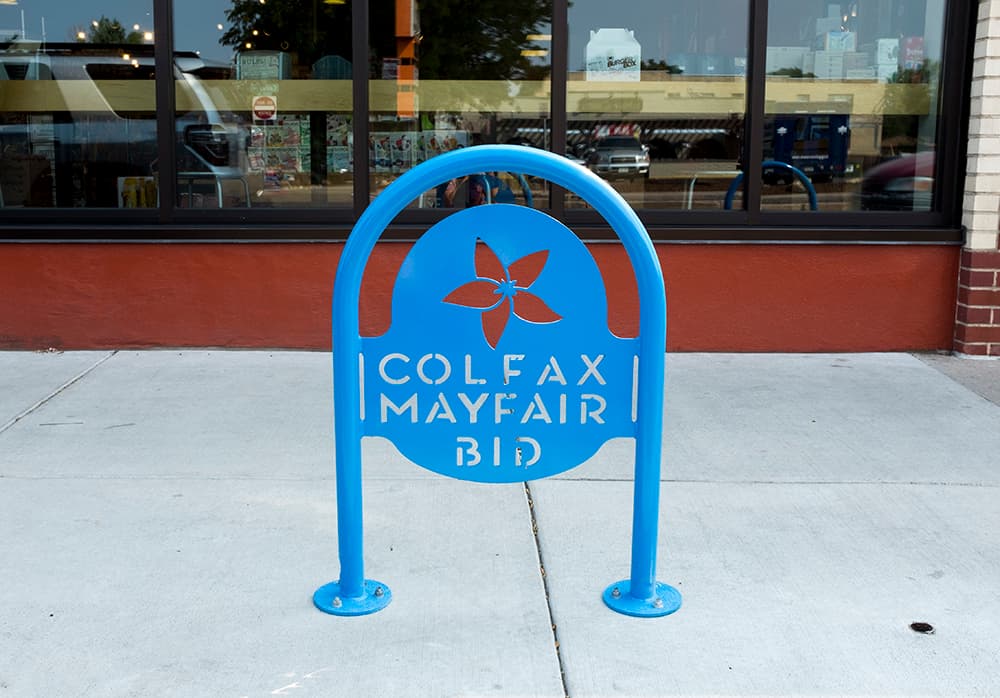
Colfax Avenue was built for the golden age of cars. Now, after a decade of fighting, it looks like the avenue may finally get a significant change to protect pedestrians.
“We’ve got one of the most dangerous corridors, in terms of pedestrians, in the city," said Frank Locantore, director of the Colfax Avenue Business Improvement District.
"... It’s crumbling. The sidewalks are falling apart. There’s missing trees. All of the things that make a good, pleasant streetscape are lacking."
Some $20 million could be dedicated to sidewalks, medians and changes on Colfax if Denver voters approve a spending package this fall. If it happens, planners and advocates foresee a Colfax that is busier with businesses and residences, from west to east.
"This is a great moment for Colfax," said Dan Shah, director of the West Colfax Business Improvement District. "It’s a once-in-a-generation opportunity to make changes to Colfax that plans have called for and people have wanted for decades."
Here's what's planned for four different sections of Colfax-- and what it tell us about the new political power that's coalescing on the strip.
This has been a long time coming.
As we detailed earlier, much of Colfax was built up in the 1950s for the endless stream of people using it as a highway route across the country. Nearly 70 years later, that basic form remains on both western and eastern Colfax.
"Right now, if you stand at Monaco and Colfax and look down, you’ll see a wide open drag — just put your foot on the pedal and get downtown as fast as you can," said Hilarie Portell, director of the Mayfair Colfax Business Improvement District.
"The vehicular traffic is moving very fast. The street lanes are wide, the sidewalks are narrow. There’s no street furniture or pedestrian-scale lighting."
These concerns have appeared in many city plans around Colfax Avenue going decades back, she said, but little has happened. In 2007, the last time that Denver put a major spending package in front of voters, the city all but ignored Colfax.
"We got passed by. What we learned, what the community learned was, we’ve got to get organized, and we’ve got to put ourselves in the position to make a credible ask for public funding," Portell said.
In the time since, property owners along Colfax convened four different business improvement districts, which have the power to collect an extra tax and spend it to maintain local infrastructure. Recently, the BIDs have banded together as the Colfax Collaborative.
That kind of political organization ensured that the sidewalk spending made it into the final spending package this time, even though it was in doubt at times.
Here's the plan:
If voters approve the nearly $1 billion bonds package, then $20 million of that will go to rebuild sidewalks, install medians, plant trees and install benches and other street furniture at points along an eight-mile stretch of Colfax.

West Colfax would be redesigned along about a half-mile between Utica and Osceola streets, according to preliminary plans.
The major changes could include medians with trees down the center of the road and expanded sidewalk "bulbs" near intersections. Those bulbs would mean less time on the pavement when people cross the street. Median islands could restrict left turns and offer safe spots for pedestrians halfway across the road.
"We felt like it's one of the most important things that we could be doing to make Colfax more accessible for people and to support our businesses here," Shah said, noting that the district's plans are based on surveys and prototypes.

Plans for central Colfax are fairly ambitious and may require some money besides what's in the bonds. Changes could be spread from Grant Street to Josephine Street, almost 1.5 miles.
One idea would be to convert the last block of Park Avenue to a pedestrian area, converting the five-point intersection into a standard four-way.
That could free up some needed pedestrian space, Locantore said.
"We don’t have elbow room on Colfax. There’s not a place for us to put out a cornhole game, or a large chessboard, or even a small chessboard," he said.

The plan also could include new signs, map kiosks, artistic crosswalks and expanded sidewalks where possible. Also on the wish-list are sidewalk rebuilds, bike racks, street trees and more. Also interesting: the idea of finding new uses for a handful of alleys near Colfax.
“It’s a long-term vision, but we really tried to make it attainable over time," Locantore said. (The full master plan is available online.)

The $20 million also would include funds for the Bluebird District, near the Bluebird Theater. Its main goals are extended curbs near crosswalks, pedestrian islands in the median, new mid-block crosswalks and more on-street parking.

Finally, there's the Colfax-Mayfair district, which runs about a mile from Eudora Street to Monaco Parkway.
"Our streetscape vision is pretty modest because we are a smaller BID with a smaller budget, and we can only afford to maintain so much," Portell said.
"I’m looking for basic elements like trash cans, pedestrian scale streetlights and I already put in some bike racks."
Her projects would stay within the existing sidewalk, but she's hopeful that the city might slightly narrow traffic lanes, which likely would slow automobiles.
We don't know when these projects would be built, assuming that voters approve the spending package. Many of the changes could come alongside the creation of the bus rapid transit system on Colfax, expected to be built over a year or two starting in 2020.

These projects could mean bigger things are coming for Colfax.
They're just one of several pieces in motion.
For one thing, the city is working on two big plans -- the East Area Plan and the East Central Area Plan -- which focus on Colfax Avenue.
Those are just getting underway, and there's still plenty of time for the public to weigh in. Eventually, they'll guide the city's investments along the corridor.
Bus rapid transit -- the creation of dedicated lanes and new stations for buses -- also could significantly change Colfax, as Megan reported earlier.
Between new transit and a more walkable strip, Portell sees a new style of development and living coming to what is now a largely commercial and auto-centric corridor.
"If a community corridor (like Colfax) is supposed to serve the surrounding area, then that means I need to have a business mix on this corridor that meets the daily needs of people," Portell said.
"I need to have people coming to Colfax three or four times a week, whether they’re shopping, dropping of dry cleaning, picking up a bottle of wine, meeting a friend for dinner… maybe they even know someone who lives on Colfax."
The idea that I've heard several times is that Colfax, with its lanes of fast-moving traffic is a divider. "It needs to knit the neighborhoods together," Portell said, "north and south of Colfax."












